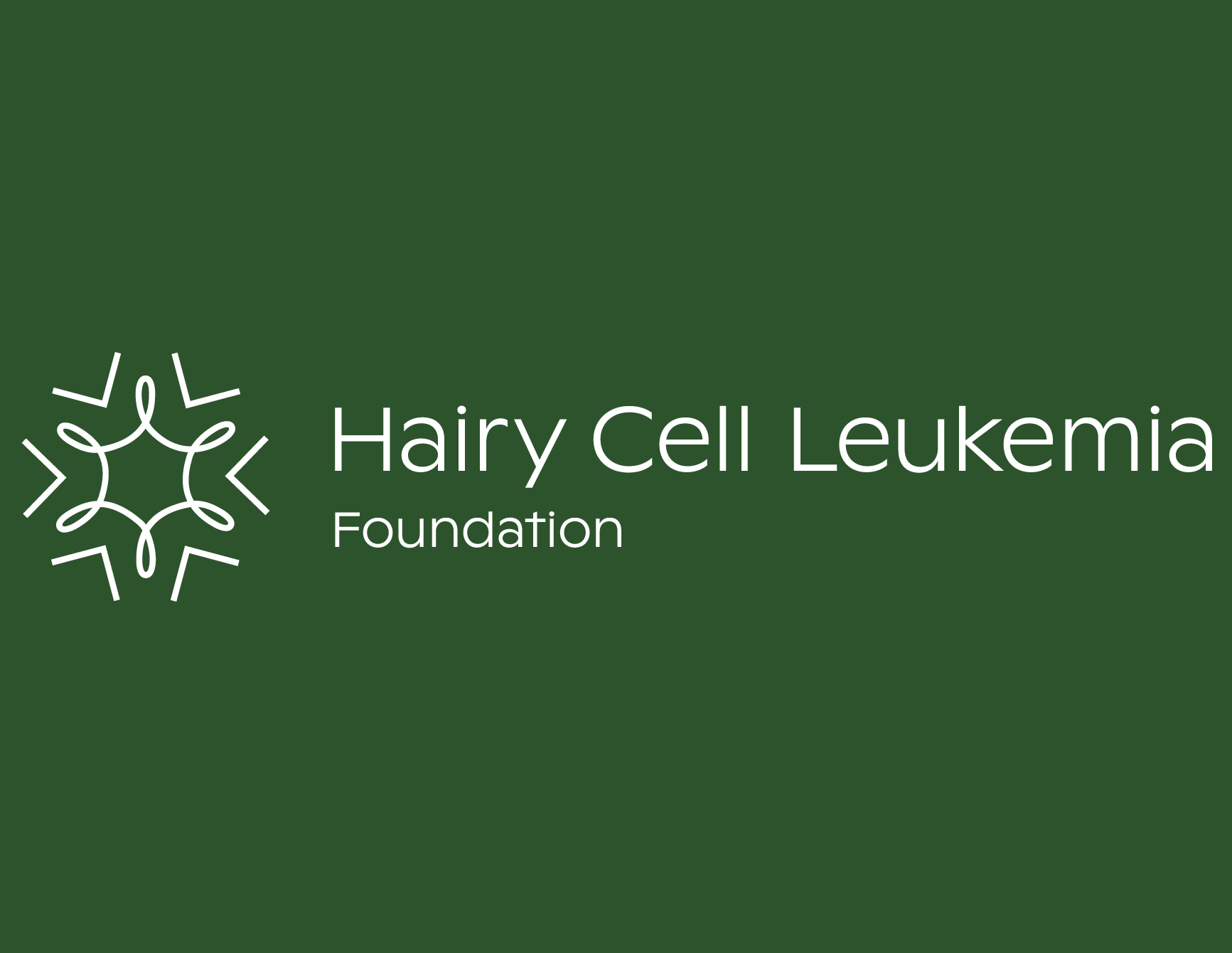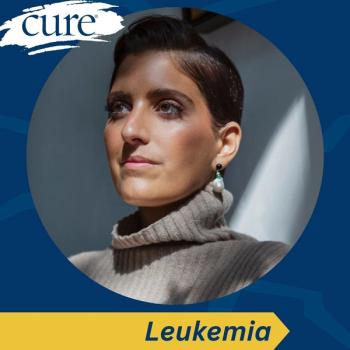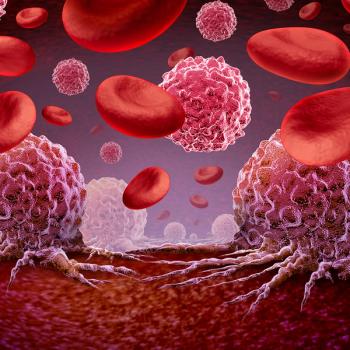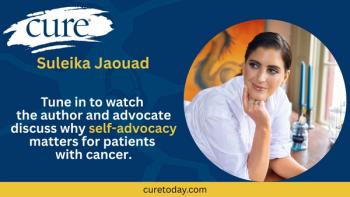
Seeking a Hairy Cell Leukemia Specialist

Transcript:
Kristie L. Kahl: What types of tests are conducted to determine an HCL diagnosis?
Dr. Leslie Andritsos: So, there are actuallyguidelines for this nowthat were published in 2016in combination with the Hairy CellLeukemia Foundation. Unfortunately almost all patients willneed a bone marrow biopsyat the time of their diagnosis. There's really not another way to getthe necessary information without doinga bone marrow biopsy.
In addition to that, it can be veryimportantto know the size of the spleen. This can be determined several differentways. Oneis with an ultrasound, which isa non-invasive way to get spleenmeasurements, but sometimes if we're concerned thatthere might be other involvement such aslymph nodes that are involved or otherparts of the body. We will recommend cat scans of the chest, abdomen and pelvis, and sometimesthe neckbecause it's very important to knowwhere you're starting from when you'repotentially going to be startingtreatment.
Kristie L. Kahl: Are these tests similar if the disease has relapsed?
Dr. Leslie Andritsos: Yes, and a lot of that will depend on symptoms. So, at the initial time of diagnosis, some people may not have any symptoms. For example, enlargement of the lymph nodes or other areas where the disease may be involved, for example, some people develop bone involvement later in the course of their disease that is not present at diagnosis, and so sometimes the investigations that are used depend on symptoms and physical exam findings. So if the doctor is finding enlargement of the lymph nodes on the physical exam they usually will order a cat scan to evaluate that further or if the patient is having symptoms in a specific area, picking the best diagnostic test for that area. So it may be very different, actually, at the time of relapse than it is initially at the time of diagnosis.
Kristie L. Kahl: What is minimal residual disease, or MRD, and how does it play a role in hairy cell leukemia?
Dr. Leslie Andritsos: MRD is disease that is still detectable after the completion of treatment and usually that means that when the pathologist looks under the microscope, they don't see hairy cell leukemia but when they do more specific tests such as specific types of staining or, for example, flow cytometry where you can run the bone marrow or blood through a machine and see if those cells are present. That tells us that the patient has not achieved a complete remission. There are still some cells present.
What we know now in hairy cell leukemia from previous work that's been done by Dr. Kreitmanand others is that when a person still has hairy cell leukemia when they finish treatment, their disease is more likely to come back in a shorter period of time. And so sometimes that can be very important information when you know that somebody has had a complete response and they have no detectable minimal residual disease at the end of treatment, they're likely to stay in remission a really long time.
I think, either way, whether it's present or not, it's very important and helpful information for both the patient and the doctor when you're trying to decide how to follow up when the patient needs to be seen again.
Ultimately, I think there will be clinical trials using agents directed at eradicating minimal residual disease. So that may be an opportunity for clinical trial participation.
Kristie L. Kahl: What are the survival rates with HCL?
Dr. Leslie Andritsos: Well I'm happy to say that if we do our job correctly, which is managing things at the time of diagnosis well and making sure that infections are well treated and we've tried to minimize complications, patients with hairy cell leukemia should have a survival similar to if they did not have hairy cell leukemia. So I think that is one of the reasons why we sort of urgently feel that it's important to get hairy cell leukemia patients connected with good information, providers that can help guide therapy especially when an unanticipated complication occurs because we really want people to have that benefit of extended survival that we can see now with modern therapies.
Kristie L. Kahl: What is the best way for a patient to make sure that they're seeing somebody who is a specialist in this disease?
Dr. Leslie Andritsos: So there's not that many people who specialize in hairy cell leukemia, so the easiest way to get connected with one of those providers is to go to the Hairy cell Leukemia Foundation website, which is
Center of Excellence and tells you where they are in the country. Typically at a Center of Excellence, you'll have not only somebody who is doing research in hairy cell leukemia and treating patients but you'll also get the benefit of the expert hematopathology because typically at the Center of Excellence there's also a pathologist specializing in the diagnosis of hairy cell leukemia. So it can be very helpful especially if there's any question about the diagnosis to have an expert in hematopathology review.
Kristie L. Kahl: Why is it key to make sure we’re optimizing the interaction between a patient and their health care provider?
Dr. Leslie Andritsos: It is really important because I think that the patient may not always know when they need to be seen. For example, what sometimes are expected symptoms are unexpected. I think it is important to have a very good relationship with that provider and also the team of providers. Usually we have other people that we work with, like nurse practitioners. This is a disease that you need a lot of education around, particularly understanding your own blood counts and when to call with symptoms or side effects. I think just having that comfort level and trust between the patient and providers really improves outcomes because things don't get delayed when there's a problem.
Kristie L. Kahl: How can patients become informed about their diagnosis to be their own best advocate?
Dr. Leslie Andritsos: Forums like this, watching videos informing yourself. The Hair Cell Leukemia Foundation has a list of available clinical trials and also some results of other clinical trials that have been completed. It also has a frequently asked questions section where people can kind of scroll through and see what questions have been submitted and what the responses were. There are a lot of patient specific organizations such as the Leukemia and Lymphoma society, which will have information both generally about leukemia and also more specifically about hairy cell leukemia, because it is a rare disease that can be harder to find information. Also being very active and checking some of the social networks; I know that there are some groups on Facebook that are hairy cell leukemia patient groups. Getting connected with patient advocacy groups can be really helpful just to get more resources around management of the disease and also to feel more connected to your hairy cell community definitely.
Kristie L. Kahl: What is the caregiver’s role in a hairy cell leukemia diagnosis?
Dr. Leslie Andritsos: We know from a lot of different types of hematological malignancies that having a good caregiver is really important for optimizing patient outcomes because there are definitely times when patients don't feel like taking their medications or feel like going to that doctor's appointment or feel like going for a walk. The caregiver can help be there to be the cheerleader and just kind of make sure that things stay on track because it does get having a chronic illness, and that's really what hairy cell leukemia is. It is a chronic illness that this person is going to be living with the rest of their life and so these are things that we don't really think about when it's starting. But years down the line, people can sometimes get tired of dealing with a chronic illness so the caregiver can be there to really make sure that patient is staying on track with what they're supposed to be doing and providing emotional support.
It's very common for people with hairy cell leukemia to receive messages that this is a “good” leukemia and I think that that causes patients sometimes to not want to complain or make too much of it. So, the caregiver can help to reiterate that this is and can be a serious problem that needs to be taken care of. You don't want to minimize it, even though it's very treatable. Not paying attention to it could cause a big problem.
Kristie L. Kahl: What is your biggest piece of advice for a newly diagnosed patient?
Dr. Leslie Andritsos: My biggest piece of advice would be to find either somebody with a lot of expertise in the disease to help take care of you or to connect an expert with your own doctor. Most of us in the hairy cell leukemia community are happy to talk with other doctors just to help, especially if there are difficult questions or problems with treatment decisions to help those providers to optimize the care and for the patients to not be afraid to reach out and get additional help because some very busy oncologists may have only seen one or two cases of hairy cell leukemia in their career. A lot has changed in the treatment landscape and there are also a lot of pitfalls when you start treatment. For example, watching out for infections. So either finding an expert to take care of you or helping your own doctor to connect with an expert to discuss things early on is probably one of the most helpful things that you can do to get the best care that you can.
Transcription edited for clarity.





